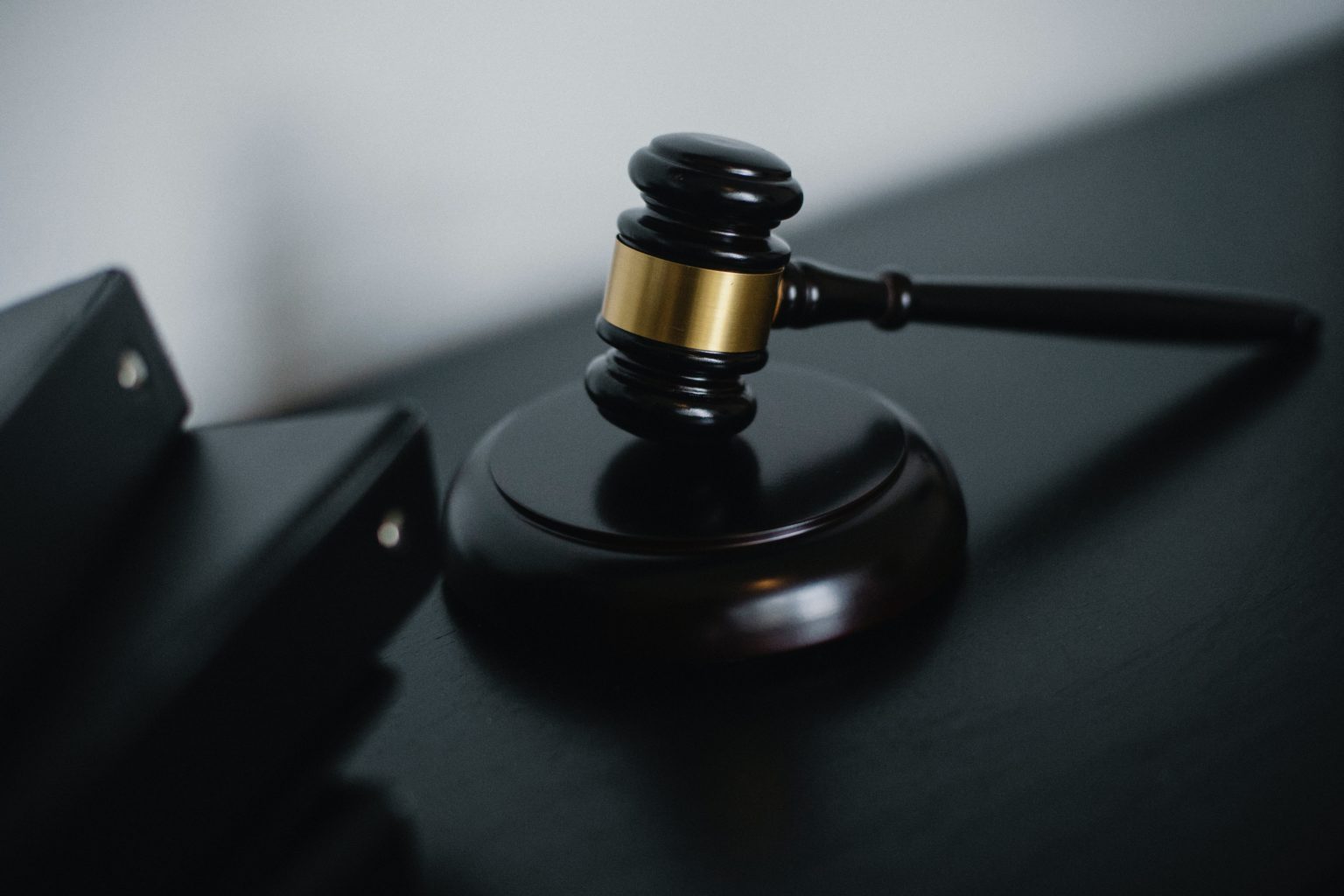
Following examination and acceptance of your Trade Mark application by IP Australia, your application will be submitted for advertisement in the Official Journal of Trade Marks for a period of 2 months. During that time, third parties who are aware of your application have the opportunity to file an opposition with IP Australia.
Once opposed, time frames for submission of evidence by both parties will be set by IP Australia and once that is complete, the parties will be given the opportunity to be heard, either by filing written submissions or by attending a hearing, either by telephone or video link with a Hearing Officer in Canberra. In person hearings are not currently being conducted due to the impacts of COVID-19, however this may change in future.
Recent changes in IP Australia policy also now require an attendance fee to be paid by all parties wishing to be heard, even if filing written submissions only.
If you have recently received a Notice of Intention to Oppose or Statement of Grounds and Particulars, or are concerned about a Trade Mark which has recently been filed or accepted for registration, please contact trade mark lawyer Andrew Petale at info@yiplegal.com.au or by using the online submission form on this page. We will promptly provide you a fixed fee strategy plan to tackle your opposition matter in consultation with you. Some of the recent opposition cases we have been involved with are listed below.
Varinder Toor v Vikas Sharma [2024] ATMO 158 (VICKY DRIVING SCHOOL)
Sresta Natural Bio Products Private Limited v Bhimaraju [2024] ATMO 41 (MANTRA)
Google LLC v Chitkara [2024] ATMO 27 (KOOGLE)
Zero Motorcycles Inc v Benzina Zero Pty Ltd [2023] ATMO 177 (BENZINA ZERO SPORT)
Industria De Diseno Textil, S.A. (Inditex S.A.) V Thandi Silwimba (2023) (Unreported) (ZAHARA DESIGNZ)
Richard McDonnell & Beaumont Management Services Pty Ltd v Karl Dawson [2023] ATMO 58 (PUGGLE POST)
DEKS Industries Pty Ltd v Technologies Integration Group Pty Ltd [2022] ATMO 52 (RAPID FLASH SUPERBOOT)
CELINE v Celine Victoria Robinson [2022] ATMO 5 (CELINE VICTORIA)
Australian Chiropractors Association Limited v Chiro Care Mattresses Pty Ltd [2021] ATMO 28 (CHIRO)
Agha Juice Sydney Road Pty Ltd and Muhammad Hussain v Zahra 15 Pty Ltd [2020] ATMO 187 (AGHA JUICE HOUSE)
Beena Rezaee Legal and Migration v Zahra 15 Pty Ltd (2021) (unreported) (AGHA JUICE HOUSE)
Brightflash USA LLC v China Trade Services Pty Ltd [2020] ATMO 121 (iWatchiT)
Fuji Television Network Inc v Iron Chef Pizza Pty Ltd [2020] ATMO 107 (IRON CHEF)
Easy Auto 123 Pty Ltd v Ezyauto Pty Ltd [2019] ATMO 125 (EZYAUTO)
Raymond Hoser v Stewart Gatt [2019] ATMO 119 (STEWY THE SNAKE CATCHER)
Lexvoco Pty Ltd v InCounsel Pty Ltd [2019] ATMO 83 (LEXOO)
Capital Safety Group EMA and 3M Company v Classic Supplies Pty Ltd [2019] ATMO 10 (PROTECTAWARE)
Precedent Productions Pty Ltd v Interested in Business Pty Ltd [2018] ATMO 112 (THE LOCAL BUSINESS AWARDS)
Ponani Pty Ltd v Patel Building Group Pty Ltd [2024] ATMO 185 (PATEL BUILDING GROUP)

There are many reasons why a party may oppose a Trade Mark application. There may be an issue concerning ownership of the name between yourself and someone you know. Larger corporations also frequently monitor and oppose Trade Marks containing key terms or features to prevent dilution of their brands. Often, oppositions can be filed strategically as leverage to deal with issues which would normally be dealt with at a Federal Court level but without the expense of a court proceeding.
Contact UsTypically, it takes about 1 year for the evidence stages to be completed after which the parties can request for a hearing date to be set. The parties can however agree to a cooling off period for the purposes of negotiation which freezes the time frame temporarily.
Contact Us
It is important that this is filed within 2 months of acceptance of the Trade Mark application being advertised in the Official Journal of Trade Marks. Having a monitoring service, such as Y Watch, in place will ensure that those deadlines are not missed.
This is a summary document outlining the grounds of opposition which the Opponent intends to argue and must be filed within 1 month of the Notice of Intention to Oppose. Failure to meet that deadline may result in the opposition being abandoned.
This document must be filed by the Trade Mark owner if they wish to defend the opposition, within 1 month of receipt of the Statement of Grounds and Particulars. It’s worth noting that it may take several weeks for IP Australia to process and transmit the Statement of Grounds and Particulars to the Applicant, as the document needs to be checked for compliance with their minimum filing requirements. Failure to do lodge the Statement on time may mean that the Trade Mark is automatically removed from the Register and the opposition will succeed by default.
This will be filed by the Opponent within 3 months of receipt of the Notice of Intention to Defend. It usually takes the form of a Declaration (or Declarations) outlining in detail the material which the Opponent wishes to be considered to support its grounds. This material needs careful consideration as it forms the backbone of the opposition and the first opportunity for the case to be truly tested.
This is a summary document outlining the grounds of opposition which the Opponent intends to argue and must be filed within 1 month of the Notice of Intention to Oppose. Failure to meet that deadline may result in the opposition being abandoned.
This is a further opportunity for the Opponent to address any new material raised by the Evidence in Answer and must be filed within 2 months of the receipt of the Evidence in Answer. It is important that this evidence does not go beyond responding to the Evidence in Answer or introduce new material otherwise it may be objected to at the hearing.

Once the evidence stages have concluded, it is up to either the Opponent or the Applicant to request a Hearing of the Opposition. If no hearing is requested, there will be no decision made until either party has asked for a determination and paid the appropriate fee (depending on whether the parties do or do not wish to appear in person or by telephone/video link.
Each party has the choice to:
not attend the hearing;
file written submissions (legal arguments) only;
present their case in person or through their lawyers by video or telephone link.
A written decision will usually be issued within a few months of the hearing.
If either party is dissatisfied with the decision made, it is possible to file an appeal with the Federal Court or Federal Circuit Court of Australia. In those instances, the matter will be decided afresh and may incorporate new evidence not previously considered.

Since opposition is an administrative process, the eventual outcome of a Trade Mark opposition will be either that your Trade Mark is registered or refused. The Hearing Officer does not have the power to order injunctive relief to prevent a party from using a Trade Mark or to order damages.
The successful party may be awarded costs, however these are capped and unlikely to exceed around $6,000. Either party can appeal a Hearing Office decision to the Federal Court within a limited time frame of the decision being handed down.
In that case, the appeal is heard de novo (ie. from scratch) and can include new or different evidence to what was submitted originally.
There are 11 primary grounds which an opponent can rely upon in establishing an opposition. These include the same grounds which the Examiner will have considered in assessing the application for acceptance in addition to other grounds which are specific to oppositions. Some of the more common grounds include:
Essentially, this ground alleges that the Examiner has made an error in their assessment of registrability and that there are substantially identical or deceptively similar marks which should have been raised in examination. Those marks usually belong to the Opponent but can also belong to third parties. This objection relies primarily on legal submissions, however evidence relating to honest concurrent use or prior continuous use of the mark by the Trade Mark applicant will also be relevant.
This ground is similar to section 44 but relies on the Opponent’s ability to establish that it has an existing reputation in their Trade Mark rather than their registered rights. Therefore this ground relies heavily on evidence in support of the Opponent’s marketing activities and recognition of their brands.
Because Trade Mark rights are established based on first use rather than first to file, an Opponent can be the common lawyer owner of a Trade Mark even if they have not applied for or obtained a registered Trade Mark. However, to establish this ground, the Trade Mark used must be very close, if not identical, to the Trade Mark being opposed.
This is a broad ground dealing with circumstances where a party has acted improperly or unfairly in attempting to secure Trade Mark rights. Usually this is evoked in circumstances between former business partners or parties dealing at arms length where one party has misused information obtained from the business relationship to attempt to secure Trade Mark rights.

Where A Trade Mark Is Not Capable Of Distinguishing The Applicant’s Goods Or Services (Ie. It Is Too Descriptive);
The Trade Mark Is Scandalous (Eg. It Contains Offensive Terms);
The Trade Mark Is Likely To Deceive Or Cause Confusion (Eg. If The Trade Mark Itself Contains A False Claim About The Goods Or Services);
D. If A Trade Mark Has Been Accepted Based On Evidence Of Prior Use, The Opponent Can Show It Has Even Earlier Use;
The Applicant Is Not Intending To Use The Mark;
The Trade Mark Contains A False Geographical Indication.
To discuss your needs with a qualified intellectual property lawyer, book a meeting today. Our experienced IP lawyer in Melbourne can quickly get to the heart of your issue. We can provide you with the information, guidance and options you need to make an informed decision before you choose to engage us. You can contact us by booking in a callback (through our Service Portal), sending an email, or by calling 03 8371 0012.
To discuss your needs with a qualified intellectual property lawyer, book a meeting today. Our experienced IP lawyer in Melbourne can quickly get to the heart of your issue. We can provide you with the information, guidance and options you need to make an informed decision before you choose to engage us.
info@yiplegal.com.au
5 Everage Street, Moonee Ponds
Melbourne, VIC 3039